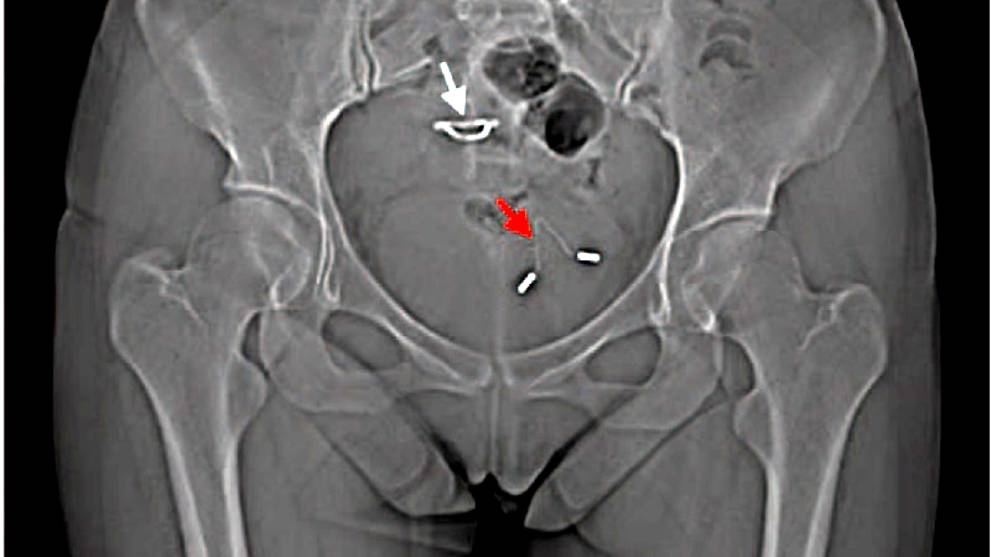An intrauterine device (IUD) is a small and often T-shaped birth control device that is inserted into a woman’s uterus to prevent pregnancy. IUDs are long-term, reversible birth control. While these are widely used and generally considered safe, it’s not to say that IUD dangers don’t exist. One such danger is the displacement of the device.
A true story

The red arrow in the X-ray shows the first IUD’s position in the woman’s bladder, while the white arrow shows the position of the second IUD | Image source: Medicine
A 26-year-old woman from China had been suffering from abdominal pain for the past five years. Doctors have finally identified the cause for her pain – an IUD that had been displaced and lodged in her bladder.
In 2011, the woman had decided on an IUD for contraception but got pregnant and had a baby in February 2012. Her baby was delivered by caesarean section. Upon her recovery, she had another IUD inserted.
A case report published in this month’s Medical Journal states that the woman subsequently started suffering from abdominal pain along with blood in her urine, and the frequent need to pee urgently. She first consulted doctors at the First hospital of Jilin University in Changchun, China.
They then performed an X-ray and the findings were shocking!
The X-ray revealed that the IUD had punctured her uterus and moved to her bladder.
What happened to her is an example of uterine perforation that happens to approximately one in every 1000 women who use an IUD, the Medical report stated. It isn’t common but it can and does happen.
It’s also noteworthy that when an IUD is displaced, it can move freely into many places other than the pelvic cavity. One such place is the abdominal cavity.
This can result in urinary tract infection (UTI), as experienced by this woman.
Consequences of IUD displacement
In worse cases, it can also lead to the following conditions:
- chronic pelvic and abdominal inflammation
- perforation of other organs
- intestinal obstruction
- risk of infection in fallopian tubes
- risk of pelvic inflammatory disease which can lead to infertility
- risk of the IUD embedding in the uterine wall
- risk of internal bleeding

Unexplained abdominal pain is a sign of IUD dangers.
Using an IUD is largely safe but when things go awry, the risks are very real and very scary. The repercussions are potentially permanent.
The Medicine report recommends that doctors follow up with their patients after an IUD insertion procedure, as a precautionary measure. This is to ensure that the device is in its right place.
Warning signs

Image source: iStock
These are also symptoms to look out for:
- unusual vaginal discharge
- fever or chills
- pain during sexual intercourse or urination
- bleeding during sex
- bleeding in between periods
- nausea and vomiting
- tender pelvic mass
- pain when gently pressing the abdomen
Not every displaced IUD is harmful but it’s best not to take IUD dangers lightly. In the event that it happens, it’s best to remove the device to avoid the risk of organ damage or other complications.
*This article is from our archives.
References: Options for Women , Channel News Asia